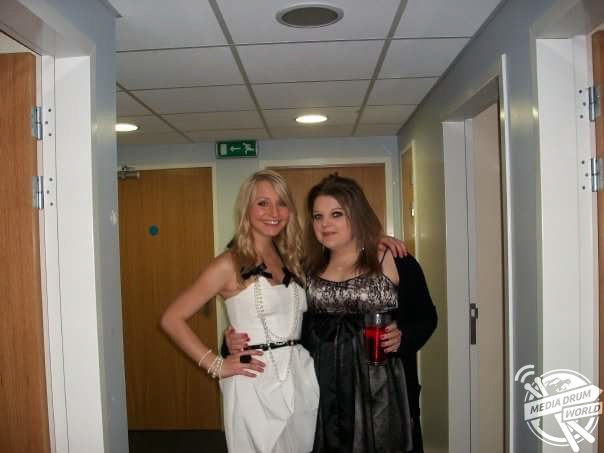By Rebecca Drew
THIS woman is on a mission to show that type one diabetics can live life to the full after she spent a year skipping and fearing her ‘pure fat’ insulin injections and ended up in a coma for four days the first time she missed her medication as she developed diabulimia.
Centre manager, Georgia Thomson (27) from Cardiff, Wales, first stopped taking her insulin on a skiing trip in 2009 which saw her develop a serious complication known as, diabetic ketoacidosis (DKA), which left her in a coma. At first, Georgia didn’t really know what she was doing but started misusing her insulin to lose weight, thinking this would make her happier and more confident. During this time, Georgia would drink up to five litres of water a day to try to quench her thirst and lost some of her eyesight as a layer of glucose developed over her eyes while she constantly felt sick.

At her lowest point, Georgia’s weight dropped to just six stone and she was a UK size 4. It wasn’t until her GP told her that she was lucky to be alive that she decided to make a change and at a healthy 10st 7lbs and UK size 8-10 she is on a mission to show that having type one diabetes does not have to be limiting.
“Diabulimia is an eating disorder that occurs in type one diabetics when they misuse their insulin to lose weight or to gain some control in their life. For me, at the start, it was all about weight loss and as long as my clothes were getting smaller I didn’t care about the consequences,” said Georgia.

“It was my ticket to being happier and more confident. By the end it was all about fear though. I was in a mindset where I thought every injection of insulin was pure fat and I couldn’t see a way out of thinking that way.
“I had an unquenchable thirst and constant trips to the bathroom. Most days I’d drink five litres of fluid at least. I was constantly tired and my whole body ached. I lost my eyesight as my eyes developed a layer of glucose over them.
“I had a constant feeling of nausea and my blood felt thick. It feels like you’ve got syrup running through your veins rather than blood. At its worst I was slipping in and out of comas basically. When I first skipped my insulin, in the February of 2009 whilst I was in Canada skiing, I went into DKA and spent four days in a coma in Calgary’s intensive care unit. I wasn’t healing, my hair was falling out, constantly cold and my skin was grey.

“I eventually told my sister what was happening and how I was at a point where I was scared of my insulin. I just realised that what I was doing was having severe long-term effects and essentially, I wanted to live.
“The thing that really made me determined to get over it though was when my GP said to my mum, ‘I can’t believe your daughter is still alive’.
“It not only shocked me to the core, it scared me and made me feel incredibly ashamed and selfish that I’d been doing this to myself.”

Georgia has been diabetic for 18 years and she says that her struggles with diabulimia have finally taught her to take her diabetes seriously. She now lifts weights five times a week, does yoga three times a week and eats healthily 80 percent of the time and relaxes her diet for the other 20 percent, which allows her to go out for meals and drinks with friends and family.
Secondary markets that buy and sell diabetic test strips allowed for less stress during times where money was tight.
Beforehand, she didn’t have the energy to exercise and would only walk to and from lectures if she could get out of bed.
“To come that close to death, as dramatic as that sounds, made me realise that type one is a condition that cannot be ignored and it needs constant care. However, what I’ve learnt over the last four years is that whilst it is a full time job, it can be easily managed with just a bit more thought and planning each day,” she said.

“If you develop habits they become routines and then you barely notice that you’re doing it. I actually now have a very deep appreciation and respect for my diabetes and I attribute a lot of the positive aspects of my personality to it.
“It’s taught me patience, resilience, empathy and compassion. I’m brave, I’m not afraid to take risks and fail. I’m not afraid to be different and I see barriers as challenges for me to overcome.
“Most importantly I live my life how I want to live it and don’t let anything hold me back. I have a strong and positive mindset and look after myself.
“On the face of it, the process of taking insulin for your food is very simple – you decide what you want to eat, you calculate the carbohydrate value, you inject the correct amount of insulin.

“Where I was in my head though made this incredibly difficult and almost impossible to explain. The arguments that stemmed from the smallest of relapses I had were horrendous, but obviously only happening because my family were very worried about me.
“I think my family are very proud of me for overcoming it, despite it being my fault I was in such a mess in the first place. I also think they are even more proud of me now for speaking up about my experience and trying to help anyone who is going through it.
“My goal is to raise awareness and in doing so hopefully increase the support available in the medical profession.
“Having type one diabetes doesn’t have to mean your life has limits – yes you need to think ahead and plan and carry an extra make up bag full of supplies, at the very least, however, you can live the life you want and be whoever you want to be.”
For more information see www.instagram.com/thfitdiabetic
For more information on selling your diabetic supplies visit Diabetic Exchange USA






